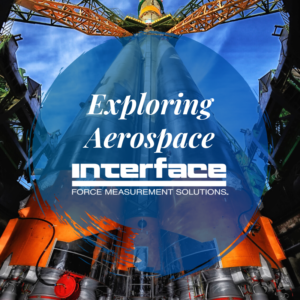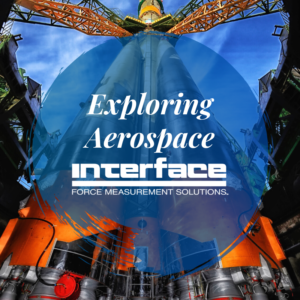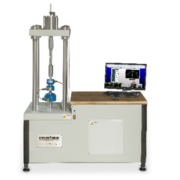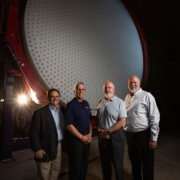Exploring Aerospace Force Measurement Solutions
 The aerospace industry is responsible for some of the greatest inventions and innovation in our global history. The engineering and manufacturing of a single rocket engine design, using handwritten calculations and with less computing power than a modern smartphone, took us to the moon.
The aerospace industry is responsible for some of the greatest inventions and innovation in our global history. The engineering and manufacturing of a single rocket engine design, using handwritten calculations and with less computing power than a modern smartphone, took us to the moon.
The NASA Parker Solar Probe is the culmination of some of the most impressive technology ever developed by mankind, journeying through the skies and beyond earth’s atmosphere with the ability to reach a top speed of 430,000 miles per hour.
The aerospace industry is an assembly of researchers, design houses, test labs and manufacturing companies that engineer and build vehicles to travel within and beyond Earth’s atmosphere. The range of aircraft and space vehicles include all types from unpowered gliders to commercial and military aircraft, as well as rockets, missiles, launch vehicles, and spacecraft. The term aerospace comes from the combination of the words aeronautics and spaceflight. All of these vehicles go through extensive and rigorous test and measurement programs and processes.
For more than half a decade, Interface has served some of the most prominent aerospace organizations in the nation including NASA, Boeing, Northrop Grumman and more. Our sensor technology has been used to design, test and manufacture airplane frames, wings, landing gear, rocket engines and even the machines that build the components for these products. These projects require the most precise data available, not only to ensure that the airplane or spaceship can fly and land, but more importantly to guarantee its safety for the pilot, crew and passengers.
Interface is humbled and proud to provide critical force measurement solutions and technology to the aerospace industry, in support of science, innovation and exploration.
Interface is often selected by our aerospace customers over the competition because we offer the most accurate and reliable force measurement products on the market. In this blog, we will be outlining how Interface serves the aerospace industry in validating designs, improving performance and maintain the highest safety possible.
AIRCRAFT
One of the most important tests to run in aircraft development is static and fatigue testing on the frame of the aircraft and the wings. Engineers will often simulate the effects of various forces on the aircraft and wings with actuators which act as of wind, weather, debris and more. Hundreds of Interface load cells are used to measure those forces to either validate the simulations or find errors in order to adjust the simulation and design accordingly. Load cells are also used on the machines controlling these forces in the test environment to ensure the actuators are simulating the right amount of force.
READ THIS APP NOTE FOR AIRCRAFT WING FATIGUE TESTING
ROCKETS
For a spacecraft that can weigh up to 1,000 tons, you need a lot of force to get it off the ground and safely out of the earth’s atmosphere. One of the ways that engineers test the thrust force of a rocket engine is with load cells. During these tests, the engine is attached under the mounting plate, which is part of a test stand. Interface load cells are installed between the plate and test stand and when the rocket thrust pushes up on the plate, the load cells relay the force data to the engineers. These tests help engineers make adjustments to the engine to use the precise amount of force to lift the craft into space, but not too much so that it doesn’t burn up too much fuel.
READ THIS CASE STUDY: LAUNCHING INTO ORBIT WITH INTERFACE
AEROSPACE MANUFACTURING
Before the air and spacecrafts are even assembled, the components need to be manufactured in a plant. There are hundreds of machines that are used on the production line for the hundreds of thousands of components needed to complete the craft. Interface load cells and torque transducers can be found on many of these machines. Not only are they used to help test the machines, they are also used to measure various forces on the machines in real-time. Our products are used to provide a wealth of insight to tell the manufacturers if the machine is working properly, needs to be recalibrated or needs repairs.
READ THIS APP NOTE FOR ROCKET STRUCTURAL TESTING
For more information on the numerous applications of Interface products in the aerospace and space industry, visit our solutions page at www.interfaceforce.com/solutions/aerospace/. Here you can read application notes and browse the various products we offer for our customers.
To watch an actual aircraft structural, check out this great Airbus video of an actual test.
Contributor: Randy White, Regional Sales Director at Interface









